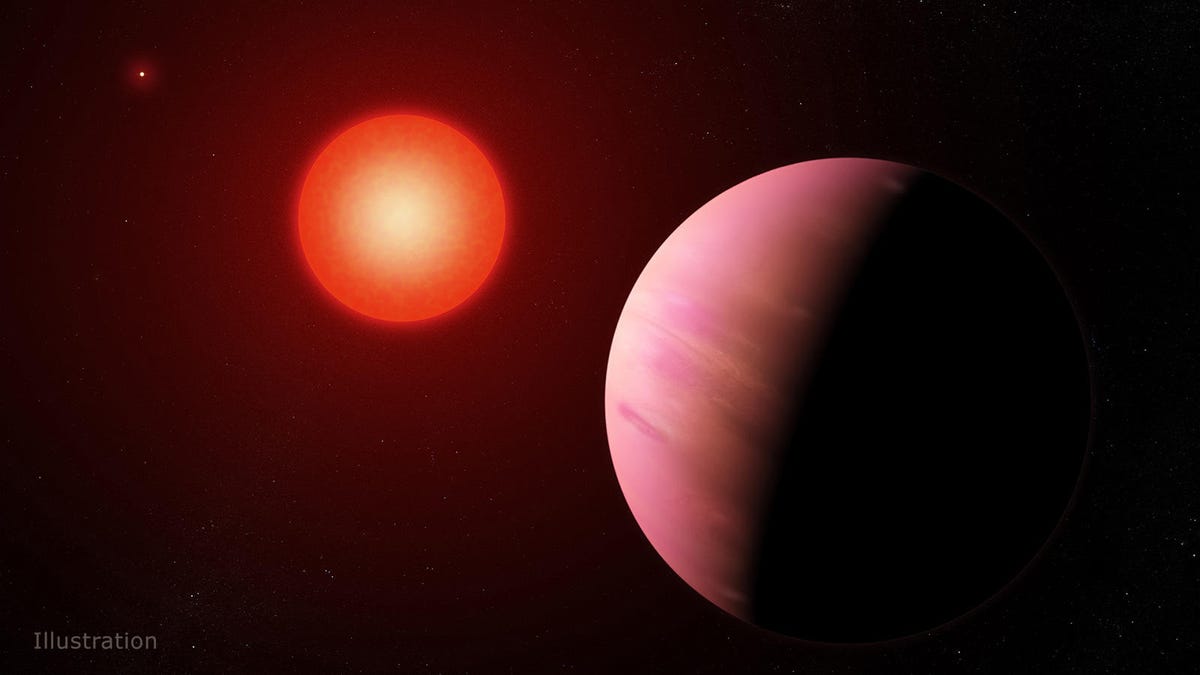NASA's Kepler helps amateurs spot unusual new planet in 'Goldilocks zone'
Citizen scientists spot K2-288Bb, an exoplanet that algorithms missed, and it might be in just the right spot to host alien life.

The planet K2-288Bb illustrated here is slightly smaller than Neptune and located about 226 light-years away.
Citizen scientists have discovered a new, rare type of planet beyond our solar system that's about twice the size of Earth and located in the habitable, or "Goldilocks zone," around its star where liquid water might exist on the exoplanet's surface.
"It's a very exciting discovery due to how it was found, its temperate orbit and because planets of this size seem to be relatively uncommon," Adina Feinstein, a University of Chicago graduate student and lead author on a paper describing the find, said in a news release.
The announcement was officially made at the semi-annual meeting of the American Astronomy Society in Seattle on Monday. The paper will be published in The Astronomical Journal.
The newfound planet is named K2-288Bb and, like the fictional planet of Tatooine from the Star Wars universe, it can be found in a binary star system. In other words, any alien life-forms on the surface of this world 226 light-years away are often bathed in the light of two suns.
All that extra sunlight might not amount to the same level of sun and heat that make Tatooine a desert planet. That's because K2-288Bb orbits the dimmer of the two, cool M-dwarf stars in the system.
M-dwarfs also come along with a high incidence of potentially sterilizing solar flares.
If the planet isn't getting blasted by radiation, though, a new and unrelated paper co-authored by Harvard's Abraham Loeb suggests it might receive just enough energy to support life. (You may remember Loeb made waves last year with a study suggesting interstellar object Oumuamua might actually be an alien-built probe.)
Loeb and postdoctoral researcher Mansavi Lingam conclude that low-mass M-dwarfs need to be at least one-fifth as massive as our sun to sustain photosynthesis, the buildup of oxygen and a life-supporting biosphere on any planets orbiting in their habitable zones. The paper is set to be published in Monthly Notices of the Royal Astronomical Society.
K2-288Bb's star meets the threshold with a mass that equals about a third of our sun's. Such a star is "theoretically capable of sustaining biospheres with the same productivity as the Earth," according to Loeb and Lingam.
It's far too early to say for sure what the surface of the newfound planet might be like, however. It could be a relatively large rocky planet, or it might be a smallish, gassy Neptune-like world much different from our own. Only a few exoplanets of this unusual size range have been found so far.
The story of K2-288Bb's discovery is also interesting because it was spotted in large part with the help of volunteers looking at light-curve data from NASA's Kepler Space Telescope with their own eyes, rather than just being picked up by software analyzing the data. The citizen scientists participating in a program called Exoplanet Explorers were able to spot a planet that the algorithms had missed.
"It took the keen eyes of citizen scientists to make this extremely valuable find and point us to it," Feinstein said.
The find could help astronomers understand why there is a gap in the catalog of known exoplanets between so-called "super-Earths" and "mini-Neptunes."
It also demonstrates that though Kepler is no more and its successor, the Transiting Exoplanet Survey Satellite, is already making discoveries of its own, the pioneering spacecraft still lives on through its data.
NASA turns 60: The space agency has taken humanity farther than anyone else, and it has plans to go further.
Crowd Control: A crowdsourced science fiction novel written by CNET readers.

